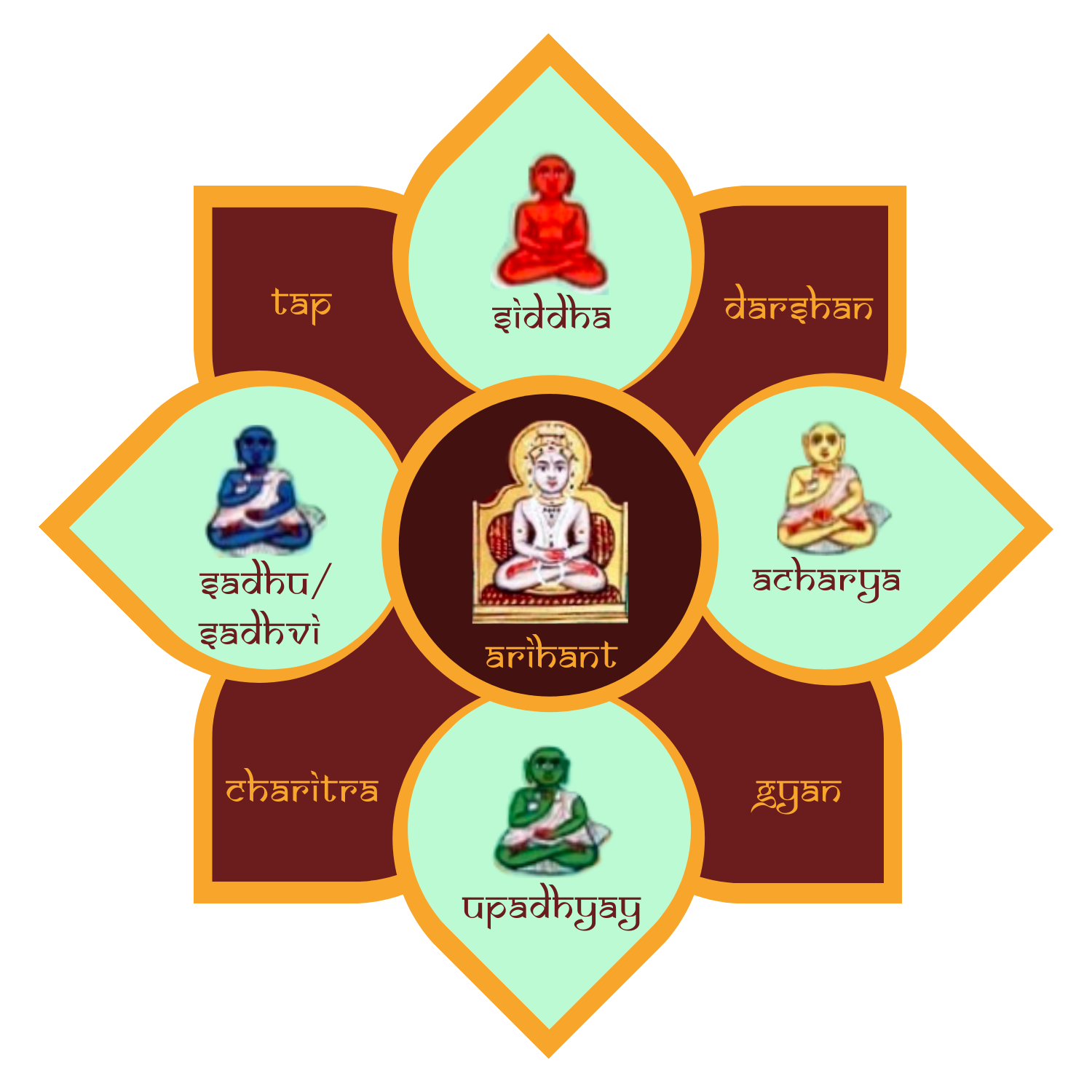What is Navpad Oli?
Navpad Oli is the most important parva, or festival, in Jainism. Also known as
Ayambil Oli, it lasts for nine days, and occurs twice a year.
During this time, Jains worship the nine supreme entities of the universe: (1)
Arihants, (2) Siddhas, (3) Acharyas, (4) Upadhyays, (5) Sadhus/Sadhvis, (6) Samyak
Darshan, (7) Samyak Gyan, (8) Samyak Charitra, and (9) Samyak Tap.
Throughout this festival, many Jains complete Ayambil Tap, which means to eat only
once in a day and give up “tasty” foods during the meal - this means avoiding milk,
curd, ghee, oil, sugar/jaggery, and fried foods. One would also drink boiled water,
as is done for similar fasts.
Fun Fact: Navpad Oli is shashvad, or eternal - it always has existed
and always will continue to exist!
The Story of Shripal and Mayna
Shripal was a common man who suffered from leprosy. Mayna, on the other hand, was a princess. After an argument with her father, Mayna was forced to marry Shripal, whom they would later discover was the heir to the throne of Champa-nagar. Shripal and Mayna wanted to cure his disease. They sought guidance from Achaya Munichandra, who advised that they devote themselves towards observing Navpad Oli. Through their efforts and faith, Shripal’s disease was cured and the couple ruled the kingdom of Champa-nagar. Want a more detailed version? Click here!
Mahavir Janma Kayanak
Today (Chaitra Sud Teras) is Mahavir Janma Kalyanak, the birth celebration of our 24th Tirthankar Mahavir Swami. Mahavir Swami was born in 599 B.C. to King Siddharth and Queen Trishla in Kshatriyakund. Per tradition, Indra Bhagwan took the baby to Mount Meru to bathe him. His birth brought prosperity to the entire kingdom, thus he was named Vardhaman, meaning “ever-lasting prosperity.” To learn more about Mahavir Swami, visit this link!

Arihant
We worship Arihants on day 1 of Navpad Oli. Arihants or Tirthankars are liberated souls who helped revive and advance the Jain religion. This entity is represented by the color white.
Siddha
We worship Siddhas on day 2 of Navpad Oli. Siddhas are liberated souls that are free from the cycle of life and death and have attained Moksh. This entity is represented by the color red.
Acharya
We worship Acharyas on day 3 of Navpad Oli. Acharyas are the spiritual heads of the Jain Sangh. As leaders, they guide the monks, nuns, and laypeople in their spiritual journeys. This entity is represented by the color yellow.
Upadhyay
We worship Upadhyays on day 4 of Navpad Oli. Upadhyays are Sadhus and Sadhvis who have mastered Jain scriptures and impart their knowledge to ascetics and laypeople. This entity is represented by the color green.
Sadhu/Sadhvi
We worship Sadhus/Sadhvis on day 5 of Navpad Oli. Sadhus and Sadhvis are monks and nuns who have left their material possessions in pursuit of spiritual well-being. This entity is represented by the color black.
Samyak Darshan
We worship Samyak Darshan, or right faith, on day 6 of Navpad Oli. This includes having total faith in the Tirthankars, Jain Gurus, and scriptures. This entity is represented by the color white.
Samyak Gyan
We worship Samyak Gyan, or right knowledge, on day 7 of Navpad Oli. This includes understanding the separateness of the soul and body, the effects of karma, and the cycle of life and death. This entity is represented by the color white.
Samyak Charitra
We worship Samyak Charitra, or right conduct, on day 8 of Navpad Oli. This includes practicing non-violence, non-absolutism, and non-possessiveness. This entity is represented by the color white.
Samyak Tap
We worship Samyak Tap, or right austerity, on day 9 of Navpad Oli. This includes practicing self-restraint, self-purification, penance, yoga, and meditation. This entity is represented by the color white.